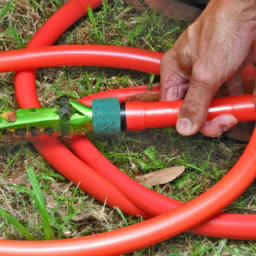How To Cut Garden Hose
How To Cut Garden Hose
Kicking off with a quick snapshot of the market in question, we'll be delving into the world of garden hose by looking at how to cut them without suffering any unforeseen issues or accidents. Whether your garden hose is made from rubber, plastic, reinforced plastic, or metal faade, the following pieces of advice will be applicable for all scenarios.
General Safety Guidelines
First and foremost, it is important to ensure that your workspace is well-organized and that you have all the tools required for the job. Most importantly, use safety gear such as eye protection, gloves, and shoes that are slip-resistant. If the garden hose is heavily damaged and could potentially tear, it would wise to consider wearing long pants and long sleeves for additional protection.
Tools Required for the Job
When it comes to cutting a garden hose, you could use a few different tools depending on the material. For rubber garden hoses, you may wish to use a utility knife along with a blade; for thicker plastic/metal garden hoses, you may need a hacksaw blade or a pair of tin snips. Some garden hoses may also require a saw designed specifically for cutting plastic.
Cutting the Hose
Once you have all the safety measures in place and are equipped with the right tools for the job, it is time to start cutting the hose. When cutting a rubber hose, it is important to note that the rubber may become soft, so you should be careful not to compress it while you are cutting. Cut the hose slowly, as opposed to cutting it in one pass, this will help to reduce the risk of puncturing or tearing the hose. For plastic/metal garden hoses, start sawing instead of trying to cut it in one pass as with the rubber garden hoses, this will help to reduce the risk of damaging the hose.
Smooth the Edges
It is recommended to lightly sand the edges of the cut with sandpaper if the hose is made from plastic, you may also wish to use a plastic file or abrasive pad to further smoothen the edges. This will help to avoid potential injury when handling the hose after it has been cut, and it could also help to provide a tighter connection to other components.
Conclusion
So, now that you've got the basics of how to cut a garden hose down, it's time to start on the project. Always make sure to wear the right PPE for the job, have the right tools for the job, apply the correct technique, and finally, double-check for a safe and snug connection!
Brief Recap
To summarise, here are the main points to consider when cutting a garden hose:
- Ensure that the workspace is organised and all safety precautions have been taken.
- The required tools to cut a garden hose depend on its material.
- Cut the hose slowly, to reduce the risk of tearing or puncturing.
- Smooth the edges of the hose with sandpaper or a file.
As with any DIY project, safety should always come first. We hope this quick guide to cutting garden hoses helped you out in understanding the basics and gave you the confidence to tackle the project with ease!

Previous Page
Next Page
